thanks alex and loon.

Above Forum Ad
Collapse
Announcement
Collapse
No announcement yet.
the swallow tail project has begun.......
Collapse
X
-
Audi S3 8L - Stroker GTX3582 700bhp+
Golf GTI 1980
Golf GLS 1979
www.facebook.com/etunersmotorsportau
-
built some ball joint spacers to correct the steering/suspension geometry, went a different route from the few styles out there, a little beefy but peace of mind is key
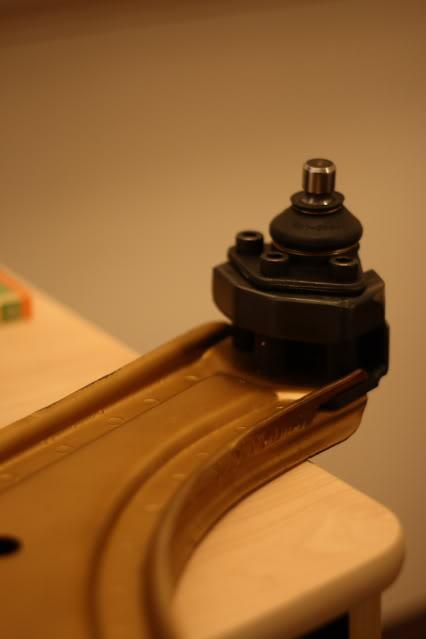
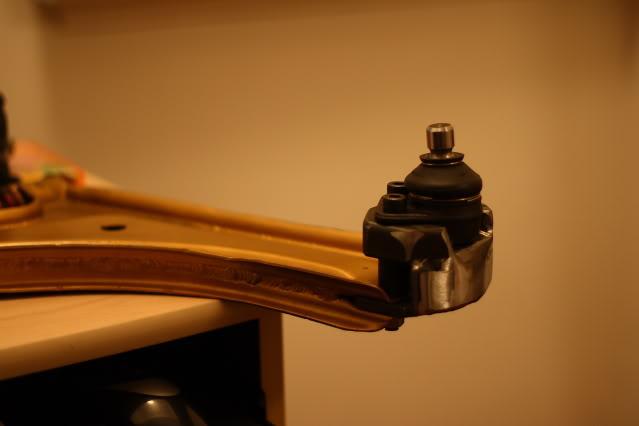
Comment
-
spacer block.
Sorry Alex, that design isnt actually going to lower the ball joint bud. it will only make the lower arm angle down more.
The spacing needs to be on the top of the ball joint to effectively raise the centreline of the front axle.
Job looks to be of you usual top standard tho.Lots of MK 1 Scirocco's...
If it aint a MK 1 then it must be a donor car ??
Cheers,
Grant...
Comment
-
I also notice that you've seam welded your control arms.. Nice! I'm going to do that with my Mk1 too if i ever get around to working on it again.. haha.

APR Tuned | KW Suspension | INA Engineering | Mocal Oil Control |
Website: http://www.tprengineering.com
Email: chris@tprengineering.com
Comment
-
It took me a second to suss out.. But roccodingo is correct.Originally posted by roccodingo View PostSorry Alex, that design isnt actually going to lower the ball joint bud. it will only make the lower arm angle down more.
The spacing needs to be on the top of the ball joint to effectively raise the centreline of the front axle.
Job looks to be of you usual top standard tho.

APR Tuned | KW Suspension | INA Engineering | Mocal Oil Control |
Website: http://www.tprengineering.com
Email: chris@tprengineering.com
Comment
-
I would have thought that would have been the idea, in combination with a tie rod flip kit to help eliminate bump steer on severly lowered golfs.Originally posted by roccodingo View Post... it will only make the lower arm angle down more.
..
ref:
Comment
-
the way i see it is it is a direct reflection of the arch of the lower arm, not the position of the pivot.
bump steer is created by the arm travelling to far up and pulling the geometry off , by correcting the arch to be more centralised and making the movement more up and down as apposed to up and in, will decrease the pull on the lower hub attachment
Comment
-
The idea is to keep the A arm parallel with the ground, with the tie rod following suit ( parallel) note water boys top pic, without the tie rod flip the two arms would not be parallel, thats what causes the bump steer effect.Originally posted by Jarred View PostI would have thought that would have been the idea, in combination with a tie rod flip kit to help eliminate bump steer on severly lowered golfs.
ref:
http://www.vwwatercooled.org.au/newf...e+rod+flip+kit
Note also that the ball joint extender lowers the a arm outer pivot, that is what changes the roll centre ( see next post )Lots of MK 1 Scirocco's...
If it aint a MK 1 then it must be a donor car ??
Cheers,
Grant...
Comment
-
Bump steer is created when the suspension arm and tie rod deviate to much from a parallel situation.Originally posted by alex g View Postthe way i see it is it is a direct reflection of the arch of the lower arm, not the position of the pivot.
bump steer is created by the arm travelling to far up and pulling the geometry off , by correcting the arch to be more centralised and making the movement more up and down as apposed to up and in, will decrease the pull on the lower hub attachment
Roll Centers
Every vehicle has a front roll center and rear roll center. They are independant from each other and are determined by suspension geometry.
The front roll center of a car with MacPherson strut suspension can be found as follows:
* Draw a line at an angle of 90 degrees from the top of the front strut
* Draw a second line through the lower control arm. The point where these lines intersect is the instantaneous center
* Draw a third line from the instantaneous center to the center of the tire contact patch. The point where this third line crosses the car's centerline at the roll center.
Note in the diagram below how lowering the car by installing shorter springs changes the angle of the control arm and moves the roll center closer to (or even below) the ground.

And more...
"During high laterally loading (going around corners) a car leans not over the
contact patches at ground level, but around something called the roll center, a
point in space which is determined by how all the various suspension parts move
relative to the chassis. A car with double wishbone suspension can be designed
with the roll center at the CG, below it, or even above it (the car would lean into the turns).
The tendancy of a car to lean is determined not by how far the
CG is above the ground, but how far the CG is from the roll center.
Here's the problem. When you lower a car with MacPherson struts (our cars)
the roll center lowers farther/faster than the CG. So if at the stock height the
roll center is 4 inches below the CG, when you lower the car 2" the CG
drops 2" but the roll center drops say 6". The actual tendancy of the car
to lean during cornering then increases.
The reason MacPherson strut equipped cars have this problem is
because the angle of the lower A-arm relative to the chassis changes
as you lower the car. Lower too far and the arm tilts
the wrong way, lower on the chassis side and higher on the strut side
and the rolling of the car has a greater mechanical advantage on the
strut causing it to compress the spring easier as the weight
shifts to the outside. That change in geometry is what changes the
roll center.
It has other negative side effects too. At the stock height, the
lower A-arm is higher on the chassis side, and lower at the hub.
When the suspension compresses under cornering the arm moves
both up toward parallel with the ground, and because it pivots
on the car side, the outside end moves out a little as well. That changes
the angle of the strut itself pushing the bottom out, causing a bit of added
negative camber relative to the static position. That is a good thing,
especially for our front heavy cars."
"You want the added negative camber to give you better laterally grip
as the car leans and as the tire sidewalls roll over a bit. (Race tires
can compensate for decreased negative camber by having stiffer/higher outer
sidewalls.. . )
As you lower the car moderately the A-arm starts out parallel to the ground
and now with suspension compression during cornering, the arm swings
through the part of the arc where there is no change in camber. That'd
be fine if you could totally eliminate body lean while still having usable
suspension travel (you can do this with a double A-arm suspension but not
with a MacPherson strut).
If you continue to lower, you experience the problems above, but
in addition now the A-arm is above parallel so you have to dial in
lots of static negative camber, and ANY suspension compression causes
the arm to swing up and back inward tilting the bottom of the strut inward
as well causing a positive camber change. A positive camber change
during hard cornering is *NEVER* desirable. The tire is leaning
the wrong way. So add it all up; the roll center lowers faster
than the CG, so the car actually wants to lean more, you have less
suspension travel so that lean causes you to come down on the bump
stops causing instantaneous weight transfer, and you push into positive
camber, all of which decreases your lateral grip, sometimes suddenly.
Check out the rear end of a swing axle beetle
There is actually a way to fix a lot of these problems, and it's
called a drop spindle. Basically you drop the car with springs, decreasing
the distance from strut top to wheel, but then the hub has a lower A-arm
attachment point that sticks down below normal. That allows
the actual geometry of the strut and lower A-arm to remain the same
but the car to sit lower. Another way to picture it is if you leave
the stock looking strut in place, and simply moved the hub
that the wheel attaches to upwards. That lowers the car keeping
everything else the same.
The bad news.. They don't make drop spindles for our cars. Period."
This is where your spindle extension comes into play, it brings the roll centre back to where it should be and lowers the car, ( thats what you want ) but the pivot needs to stay as close to the a arm as possible.
) but the pivot needs to stay as close to the a arm as possible.
Im not critisizing what you have done at all, just want you to gain the benefit of what you have done. Lots of MK 1 Scirocco's...
Lots of MK 1 Scirocco's...
If it aint a MK 1 then it must be a donor car ??
Cheers,
Grant...
Comment
-
cheers
i cant see how the pivot being 30mm different would make any difference, as it says above the main effect you are trying to combat is the arch of the lower arm,ie how far it pull and pushes out from the car, by dropping the a arm(as mentioned)it makes the movement more up and down less in and up, i cant see that the pivot sould play such a big role
the tie rods are being flipped too
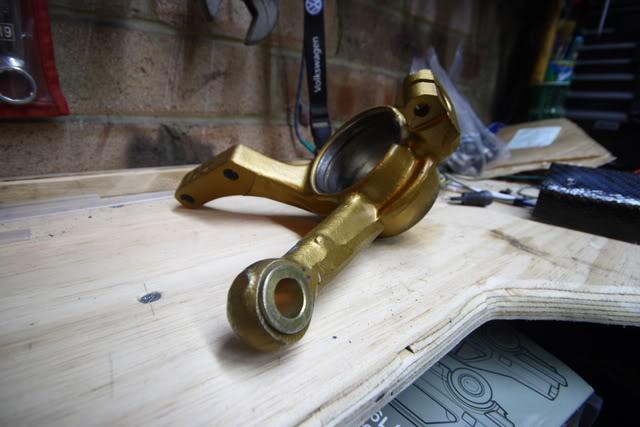
here are some similar examples
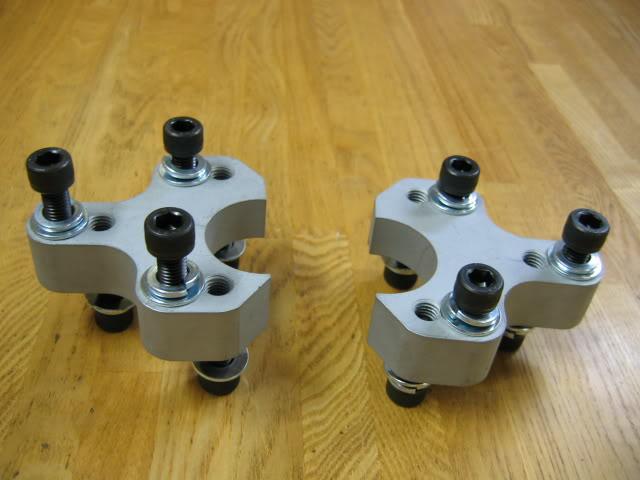
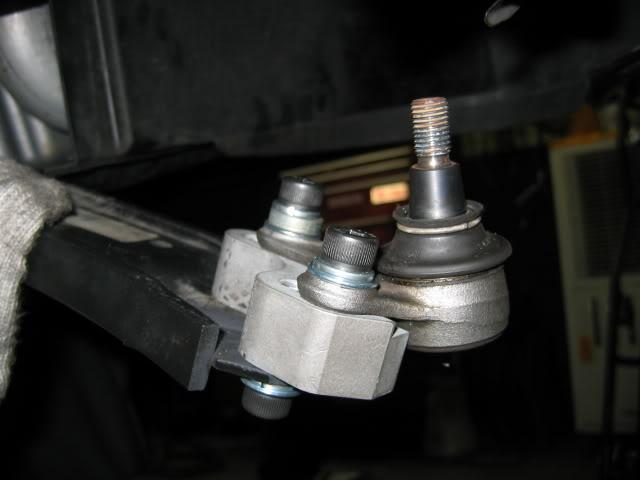
and in a upside down fashion (the pricable is the same)

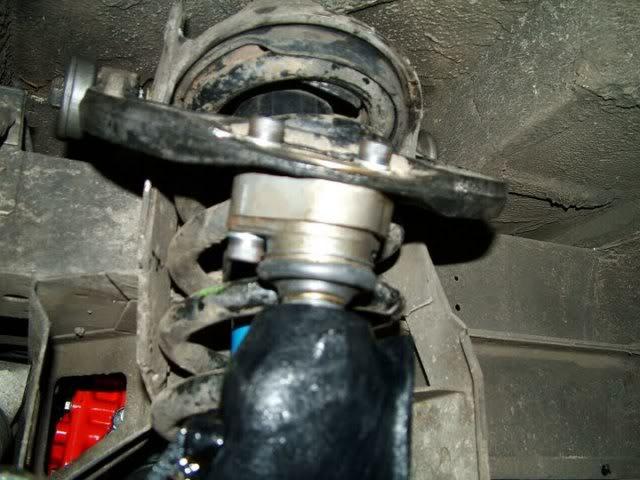
Comment
-
Best thing you can do is find a good technical suspension book and understand the principles, Go visit the racetrack and seek knowledgeable people there.
The spacer pic you have is showing the ball joint being spaced further away from the lower arm pivot ( look where the bolt holes are) and for a top ball joint on a different suspension arrangement, ( probably to extend the track 15 mm each side if there used top and bottom ) again thats a different ball game all together with reference to the Macpherson strut arrangements that the Mk1 use.
Even changing the position of the pivot points by several millimetres has an effect.
Good to see the tie rod is flipped, but by having the ball joint on top of the a arm spacer your in effect probably making the bump steer worse. Do some reading, their is loads of info out there so you can make a test jig and physically determine the best set up.
To lower the car your effectively moving the wheel rotational centre UP the suspension tube, you do this by adding the spacer to the top of the ball joint, then you need to accomodate the top of the strut by using extended towers or shorter shock & spring combinations. Once this is done to keep the steering geometry in the same relationship as it was originally ( it has a particular geometry for a reason , handling ) you need to lower the steering tie rod position ( which you have already done) the 30 mm which "should" coincide with how much you extend the ball joint down.
When it comes to the suspension operating principles, its not how the part appears, but where the pivot points are, the lower a arm could have 4 bends in it but if the pivots are in the same spot it will react and move the same as original. Look at what the pivot points are doing not how angled the a arm is.i cant see how the pivot being 30mm different would make any difference, as it says above the main effect you are trying to combat is the arch of the lower arm,ie how far it pull and pushes out from the car, by dropping the a arm(as mentioned)it makes the movement more up and down less in and up, i cant see that the pivot sould play such a big role
You want the a arm at its most horizontal position when the car is at your preffered ride height ( maximum distance from the inboard pivot ) then going into wheel movement will have the least amount of disruption to the steering.
Its good to have a car go quick and be fast, but you also want to maximise the handling abilities ( thats the bottom line ) and keep it safe.( paramount )
I want to see you get this right Alex, the amount of work you got in this means get the best result budLots of MK 1 Scirocco's...
If it aint a MK 1 then it must be a donor car ??
Cheers,
Grant...
Comment
-
Originally posted by KI11Z View PostHow can us mortals compete with this?! honestly, this build is the greatest dub build of all Australian time
honestly, this build is the greatest dub build of all Australian time 
I reckon!
I'm going to have to re-read this another couple of times to understand it, but I'm willing to learn!
Comment
2025 - Below Forum
Collapse




Comment